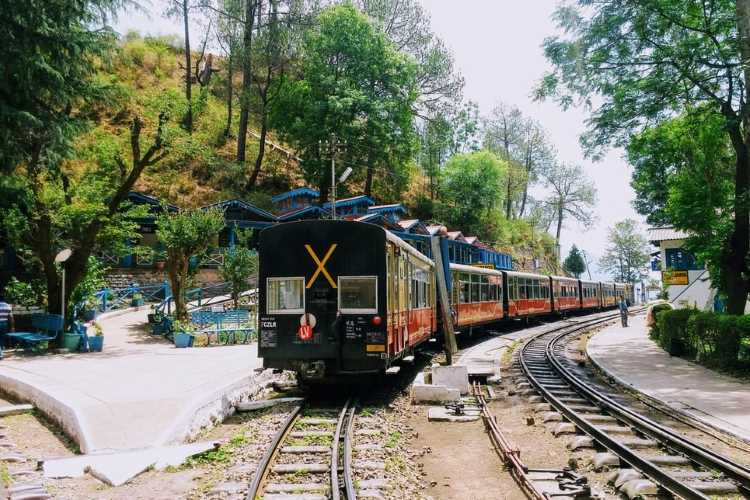By Naliniprava Tripathy, Ayush Dharnidharka and Tushar Gera
The railway ministry announced earlier this month that 151 new trains on 109 routes will be offered to private sector firms that will invest close to Rs 30,000 crore. While 151 is a small number for Indian Railways, the move is a first for the operator to allow private sector participation in the passenger segment. The Union government is treading cautiously because of the complex nature of the railways’ operations and the doubts over the viability of the railways’ welfare function under private sector.
With a network length of more than 67,000 kilometers, Indian Railways is the fourth largest railway network globally. Transporting more than eight billion passengers and more than one billion tonnes of freight every year, the railways have since long played a crucial role in the country’s transit system. While it is true that Indian Railways is credited for serving the largest democracy in the world, it has also been criticised on its service quality and punctuality.
READ I Wrong prescription: Lax labour laws will harm industry, economy
To keep pace with the rapid increase in traffic year after year, the government has been compelled to increase the overall capacity by adding new trains, expanding the infrastructure and building new lines. This has resulted in the creation of a large organisational structure. To improve the situation, the government of India has been investing in the railway network while introducing various investor-friendly policies. It has given a massive push to foreign direct investment (FDI) to support the railways’ efforts to improve freight operations and to introduce high-speed trains.
Despite all these measures, private sector participation has been insignificant compared with other utility sectors such as telecom, airports, roads, and electricity. It is because the railways has always been clouded with issues like the absence of a watchdog to create a level playing field, policy uncertainty, and other operational concerns.
READ I Covid-19 explainer: All you need to know about how coronavirus is transmitted
The railway network may be expanding with each passing year, however, with increasing competition from low budget airlines and significant improvement in road infrastructure, Indian Railways has been incurring huge losses in the passenger segment. The department has also been lacking in various other aspects of customer-facing services such as ticket booking, ticket checking, porter services, catering, and coach maintenance, which has been a cause of public resentment against the railways. The railways desperately need equipment modernisation, staff training, and infrastructure upgradation. Till this happens, the railways will be a drain on the exchequer, and will continue to serve the nation inefficiently.
Apart from the massive investment in infrastructure modernisation, non-fare revenue-generating projects such as station redevelopment for commercial operation in spaces in and around the railway station will play a significant role in driving overall revenues. Privatisation of the said ancillary services could ramp up public acceptance and make railway journey a desirable experience.
READ I Covid-19 vaccine: The thrilling race for the magic bullet
Another argument in favour of privatisation is the prospect of quality infrastructure, better amenities and latest technologies from the private sector. The most severe criticism against Indian Railways is the poor quality of its services. Privatisation of services is expected to offer users of services value for their money.
Railways’ financial health measured by its operating ratio has been either operating at the breakeven level or above it, mainly on account of the slow growth in passenger revenue and an exponential increase in salaries and pensions. This is because of overstaffing and inefficiency plaguing the overall system.
While there are several arguments in favour of privatization of the railways, there is a need to define the modus operandi and rules for the process. There are tracks, trains, and ancillary services that broadly encompass the entire operations. To begin with, trains and ancillary services can be offered for privatisation.
READ I How can India correct trade imbalance with China
The government has already started pseudo privatisation of trains with the successful launch of Tejas Express run by the IRCTC. This will encourage better participation by big players. This will ease the pressure on the government in funding the expansion of the railways, channel more funds into the upgradation of track infrastructure and improve the customer experience. At present, the central government plays all the three roles of the regulator, operator, and service provider. All these functions need to be separated to bring in transparency and generate confidence among private players.
There is confusion over the levy of fares and route preferences that needs to be settled to make privatisation successful. With privatisation, there is the risk that unprofitable routes may be eliminated by private enterprises in their quest to maximise profit. It is natural to assume that the easiest way of enhancing profits would be to increase the fares, thus rendering the service unaffordable for low-income groups.
(Dr Naliniprava Tripathy is Professor (Finance) at IIM Shillong. Ayush Dharnidharka and Tushar Gera are post-graduate students at the IIM.)

